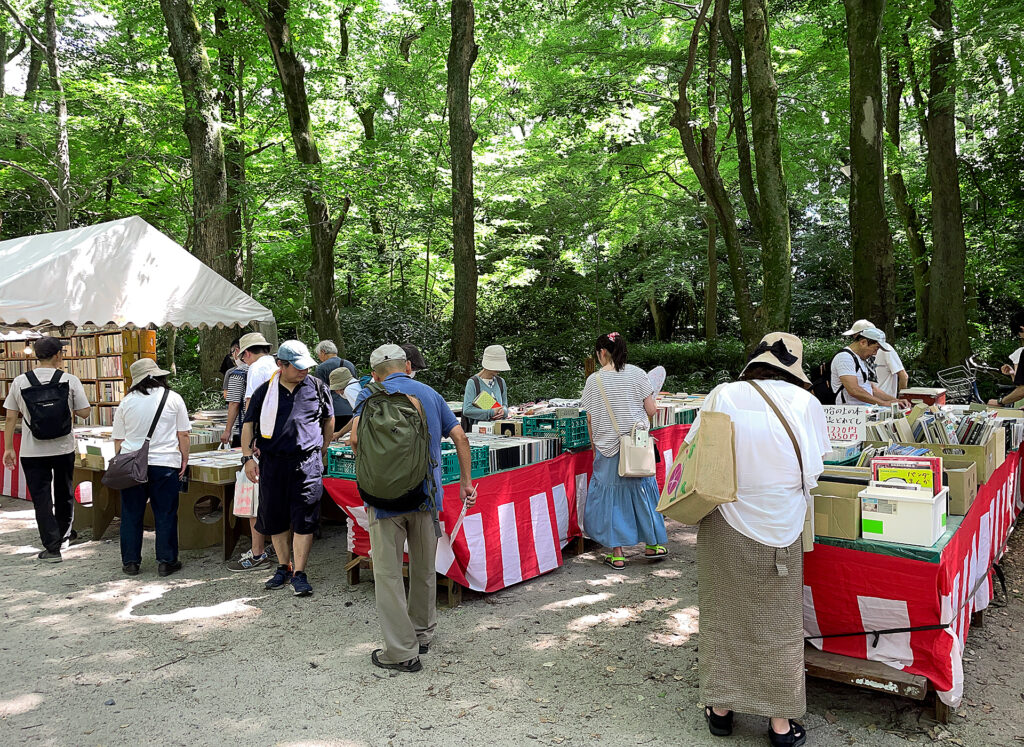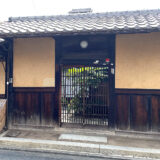Mid-August marks the summer holiday season in Japan, known as the Obon holidays.
We will explain more about Obon in another blog post. Still, during this period, many schools are on summer holiday, and many companies and other businesses are closed simultaneously.
Here are two events held in Kyoto during the Obon holidays that are a bit geeky for overseas visitors to Japan.
Gojo Wakamiya Pottery Festival
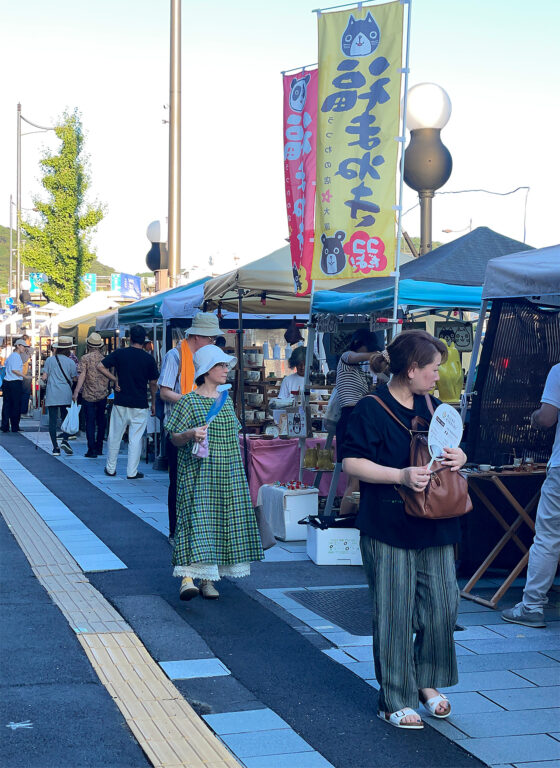
The first is the Gojo Wakamiya Pottery Festival, usually from 7-10 August.
This pottery festival has a long history and started around 1920.
At that time, many climbing kilns were in the Gojo area, and Kiyomizu-yaki potteries and related workers were concentrated there.
Many people visited the nearby Rikudo-Jinno-ji Temple and Nishi Otani Mausoleum during the Obon period, so the market had its roots in the people who visited these temples.
The pottery festival was once forced to stop due to the Corona disaster, but it was revived last year as a summer tradition in Kyoto, mainly by young ceramic artists.
This year’s venue was located on the north side of Gojo Dori between Higashioji and Yamatooji, lined with tents of ceramic studios, potters, and shops selling food and drink.
It was particularly impressive to see the energetic participation of young potters.
One of the festival’s charms is its extended hours, which run from 10 AM to 10 PM. A stroll in the cool evening as the sun goes down is a summery way to enjoy Kyoto.
Shimogamo Summer Antiquarian Book Fair
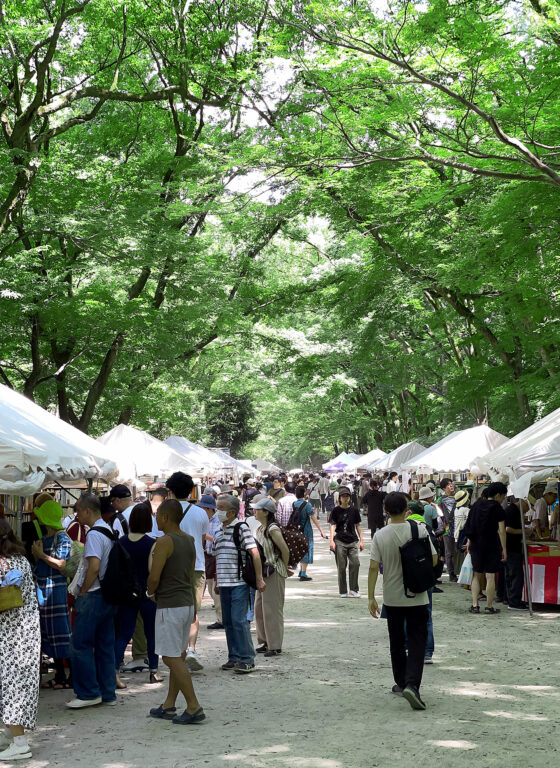
The Shimogamo Summer Antiquarian Book Fair is held annually in the Tadasu Forest of Shimogamo Shrine, registered as a World Heritage Site. About 20 antiquarian bookshops from Kyoto, Osaka, Hyogo, and Mie prefectures open their doors to sell some 800,000 antiquarian books, ranging from paperbacks and magazines to academic and art books, old books from the Edo period, film pamphlets, posters, and picture books.
Kyoto has always been a town with many antiquarian bookshops. Its history can be traced back to the mid-Edo period, when Teramachi Dori, a bookshop street, gradually transformed into an antiquarian bookstore district. In the Taisho era (1912-1926), the number of antiquarian bookshops on Kawaramachi Dori between Sanjo and Shijo increased. Even today, the number of antiquarian bookshops is decreasing, but these areas are still dotted with antiquarian bookshops.
By the way, the antiquarian book fair in Shimogamo is also well-known to the people of Kyoto and attracts many visitors daily.
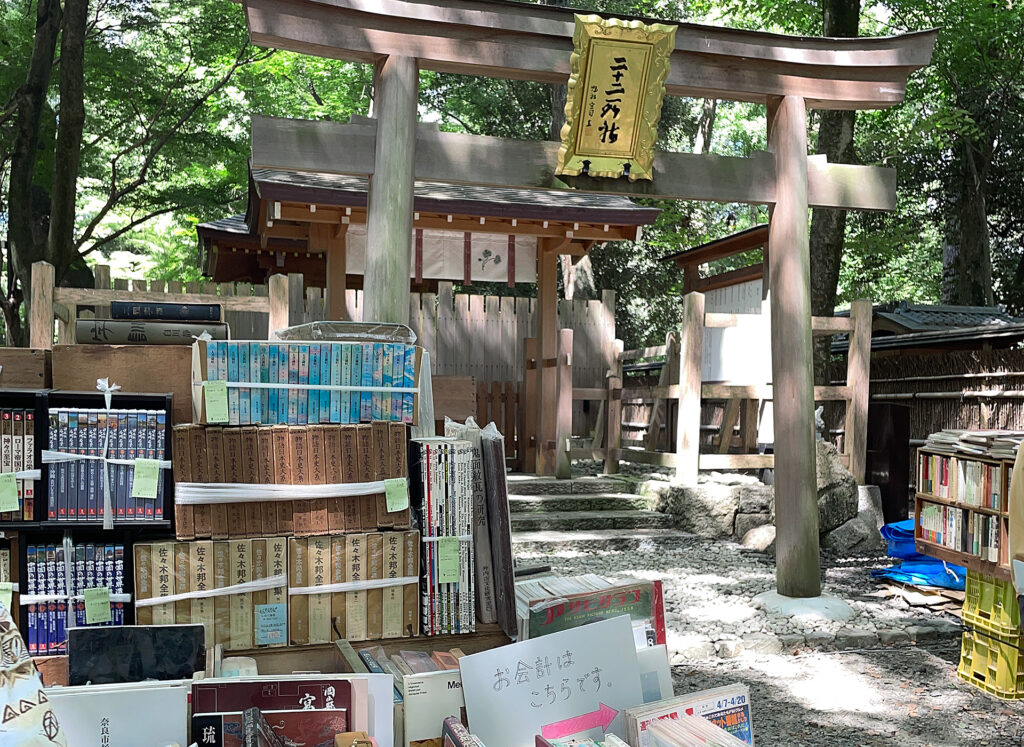
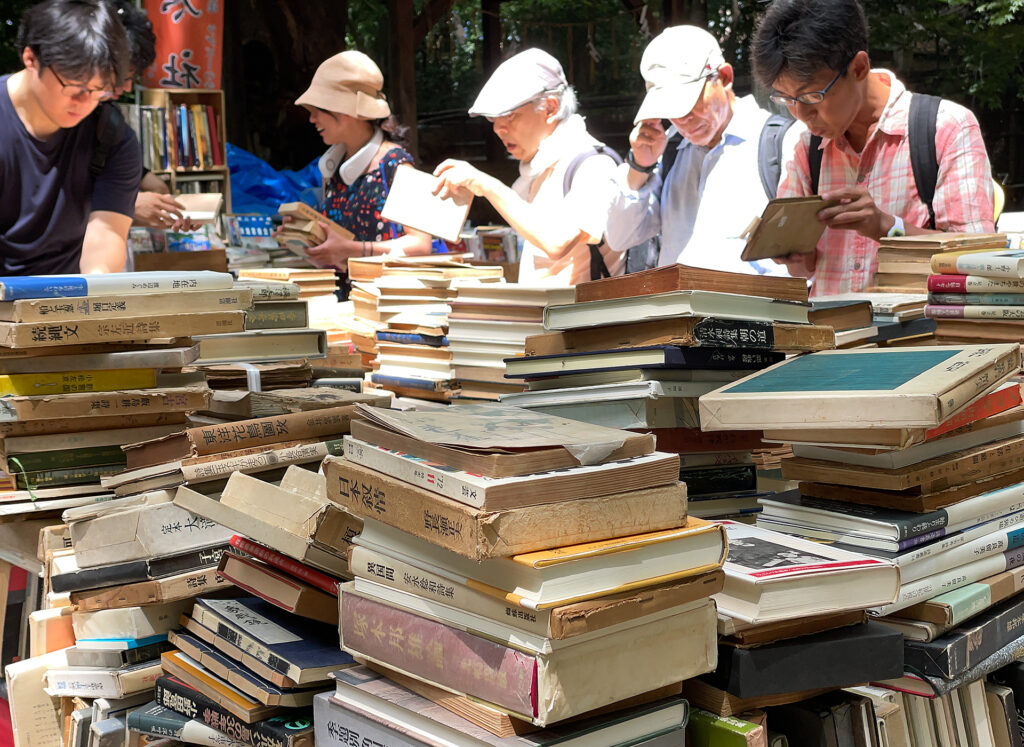
This year, too, Kyoto has been experiencing days of intense heat, but the Tadasunomori forest, with about 40 species of trees including zelkova, enoki, and mukunoki, is a 200-600-year-old virgin forest that shades the harsh sunlight and makes the temperature feel two to three degrees different, allowing visitors to enjoy the hunt for bargains while avoiding the intense heat.
